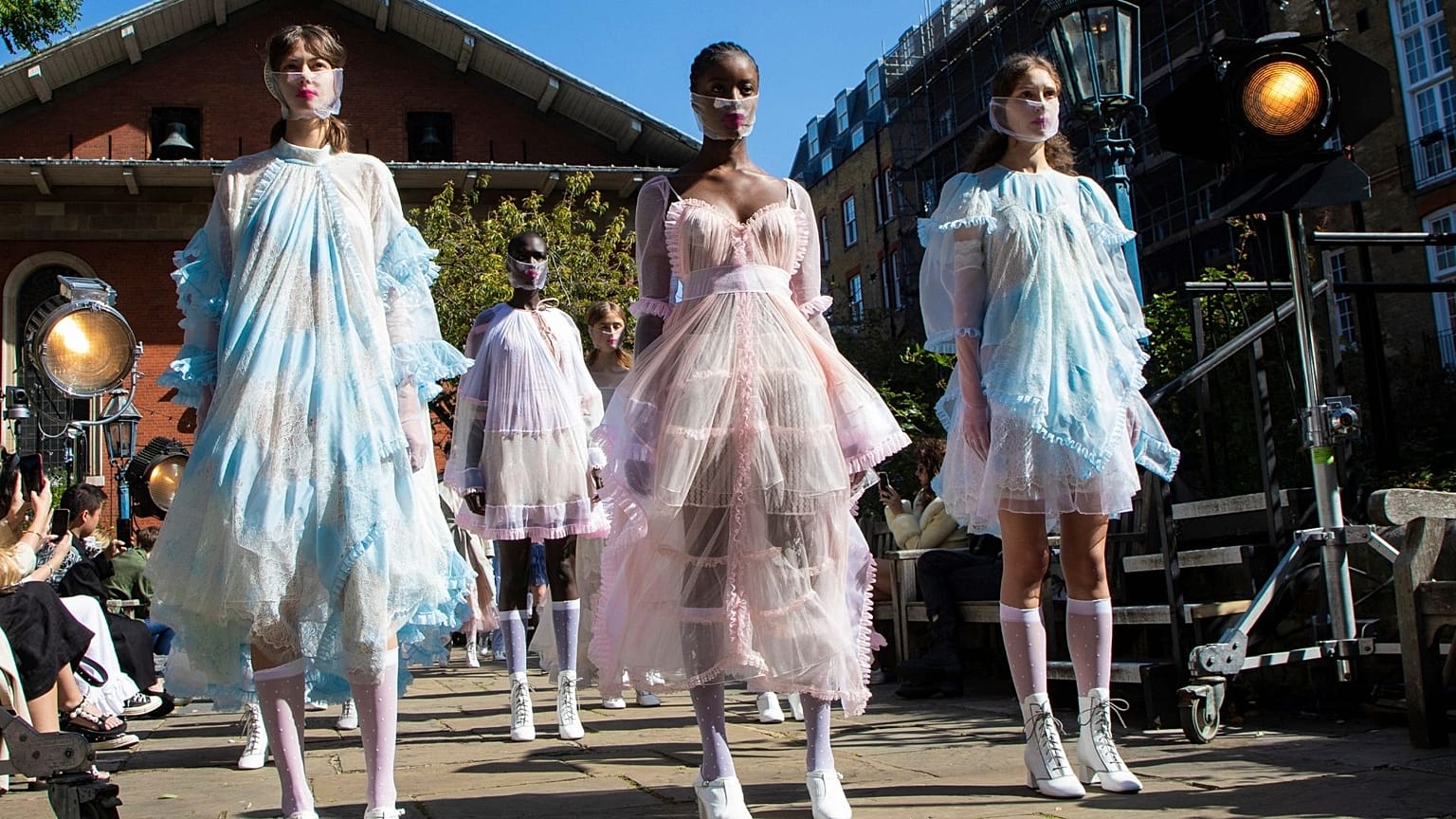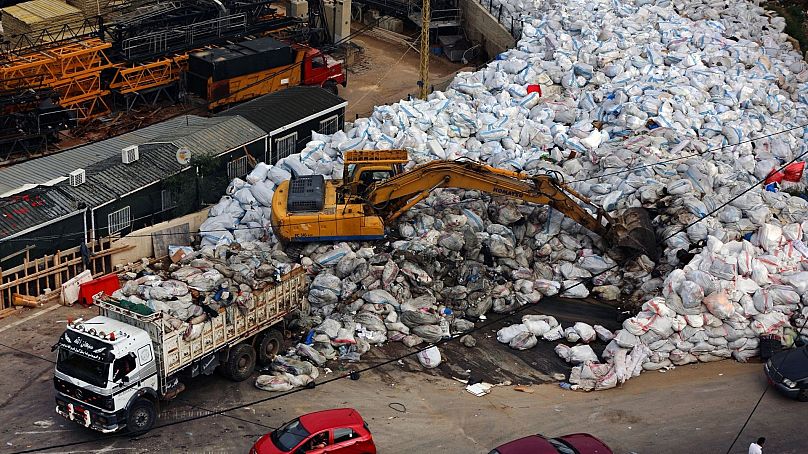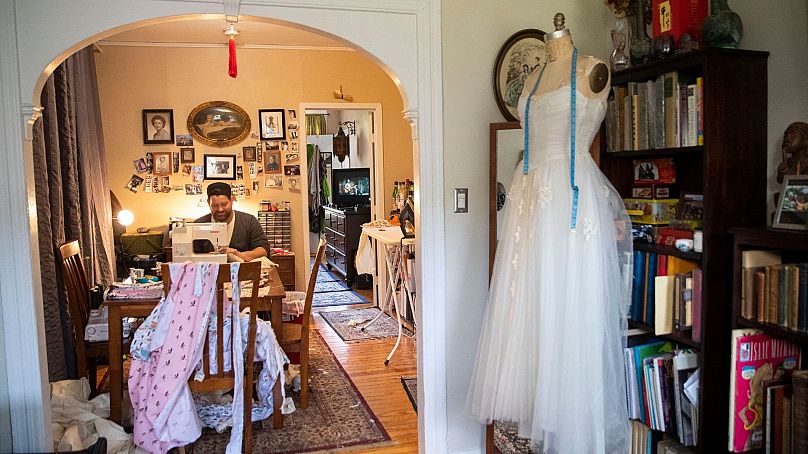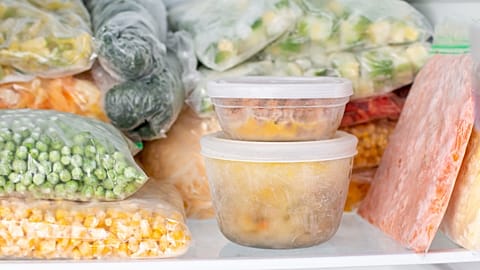Overproduction and overconsumption are intrinsic to the design industry, from fashion to consumer goods.
Richard van der Laken is a graphic designer and co-founder of design platform What Design Can Do. Here, he discusses the growing problem of waste in the creative industries and how we should address it.
This month, news broke that second-hand shops across the Netherlands were full of goods due to the coronavirus crisis. So full, in fact, that they have stopped accepting donations.
Perfectly good coffee machines, kitchen appliances, and furniture will end up in the incinerator as a result. Meanwhile, warehouses across Europe are overflowing with plastic scraps. In Poland, fields, forests, roadsides and dockyards are becoming dumping grounds for thousands of tons of household waste, most of it imported from Germany, Italy, and the UK. They are no longer able to sell this deluge onto other (often poorer) countries.
It’s becoming clear that the current pandemic is leading to a heightened waste crisis.
Everyone knows that the way we treat products today is downright shameful, but our behaviour hasn’t changed. Things are worse than ever. Every year, we dump no less than 2.12 billion tons of waste worldwide. If we continue like this, this number is set to rise by around 70 per cent by 2050, with enormous social, economic and environmental repercussions.
So, it is time for something radically different. How we make, sell, and value things has to change dramatically. And designers have a huge responsibility in this context.
Buy, use, waste
Today, the average consumer item lasts for around six months. Six months! Bear that figure in mind as you walk down your local high street, and you’ll be sick to your stomach.
We also have to face the invisible ecological disaster that is being caused by online shopping. A study by Google looked at what life is life in the Benelux (the politico-economic union between Belgium, the Netherlands, and Luxembourg).
It found that half of all consumers now have shopping apps installed on their phone, compared to just 36 per cent in 2019. In the last year, incredible quantities of clothing and consumables have been ordered, tried on, used and - without any shame - returned. Most of these products become unsaleable, and end up in the landfill.
What’s one of the reasons for the exponential growth in this destructive sector? The coronavirus crisis.
Of course, the real reason behind the waste mountain is not really the global health crisis at all. The pandemic is merely holding a mirror up to the huge social and ecological problems of our era. These problems are encompassed within one gigantic, systematic phenomenon to which we have been addicted for decades and which is only set to worsen in the future: consumerism.
As citizens and consumers, there are little to no obstacles that keep us from buying, using and, to put it bluntly, wasting.
In this, it is not just the consumer who bears the guilt but also the policy-maker, the producer, and the designer. The visionary Canadian designer Bruce Mau summarised it nicely when he said, “design got us into this mess, now it needs to take us out of it.”
We have to roll up our sleeves and change
As a designer myself, I find it tremendously painful to see how we, as a society, treat products and raw materials. This has to change.
And I have to take some responsibility, too, because we have been terrible designers. Historically, it is us who have facilitated this over-production, over-extraction and consumption, while encouraging a never-ending search for innovation. The ‘seductive power of design’ is a well-known phenomenon in the industry. You can use design to tempt people - for better, or for worse.
The fact that designers have contributed towards the breakneck speed of the fashion industry (chains like H&M renew their collections every 6 weeks), or a rampaging branding industry built on disposable packaging, single-use products and convenient return schemes, cannot be justified. As an industry and creative community, we have to roll up our sleeves and change.
Designers are uniquely positioned to transform how and what things are made of. A growing number of creatives have already taken an active role in the transition to a circular economy.
There are plenty of good examples. Like Precious Plastic, the do-it-yourself plastic recycling station created by Dutch designer Dave Hakkens. It’s open source, so anyone can build one themselves and add to a growing network of amateur recyclers. Or Petit Pli, an ingenious range of kid’s clothing that can expand up to 7 sizes as your children grow. Another exciting project is Too Good To Go, a mobile app fuelling the world’s biggest marketplace for surplus food.
These initiatives give us something to be optimistic about, but we have to go further. Now more than ever, the design community must dare to take the lead and deploy its creative potential en masse.
As a leader of a design-driven organisation, What Design Can Do, I will be taking the initiative by setting up a long-term ‘No Waste programme’ in the Netherlands and other countries, including Brazil, Mexico, Kenya, India and Japan.
We’ll do this in close collaboration and with the generous support of the IKEA Foundation. It all starts with a global design competition, which is open to submissions today.
Designers, creative entrepreneurs and innovators - get involved. There’s no time to lose.
Every weekday at 15.30 CET, Euronews Living brings you a cutting edge, environmental story from somewhere around the world. Download the Euronews app to get an alert for this and other breaking news. It's available on Apple and Android devices.




















